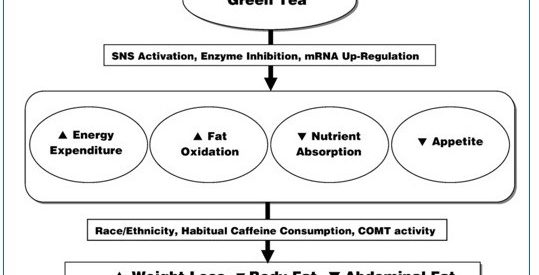I introduced fasting as a therapeutic option for patients about 5 years ago, with the Intensive Dietary Management program for weight loss and type 2 diabetes reversal. Our singular focus on dietary interventions rather than medications has allowed some remarkable successes. While fasting is effective, it?s not always easy, and I?ve looked for ways to make it easier for patients. After all, if something is hard, but good for you, then we, as physicians should not say ?Don?t do it?, but instead ask ?How can I help you?? When we give chemotherapy for cancer, we don?t say to patients, ?Well, it?s really tough, so forget it. Yes, the cancer will kill you, but we don?t think you?re up to it?. That?s ridiculous. Instead, we look for ways to make the treatment tolerable ? anti nausea medications, pain medicines and such.
At the time the IDM program started, no decent reference books on fasting and very little good information was available anywhere even on the Internet, which has information on everything. With nothing available, I wrote ?The Complete Guide to Fasting? to provide a trustworthy, reliable source of credible information. The same problem exists for fasting aids. There is simply nothing available for people who have trouble dealing with hunger pangs and other issues while fasting. If nothing was available, then I would need to create it from scratch. Sure, some people take to fasting like a duck to water, but others have issues.
I?ve always encouraged patients to drink green and black tea during the fasting period for a number of reasons. Successful weight loss depends NOT on counting calories, but upon controlling the body?s hunger mechanisms and energy expenditure. With weight loss, hunger increases and basal metabolic rate decreases and this compensation often leads to weight regain. Does anything help? Many clinical studies support the weight loss effects of green tea. The compounds responsible for the benefits are thought to be the green tea catechins (GTC), of which EGCG is the main one.

The GTCs activate the sympathetic nervous system (SNS), responsible for the so called ?fight or flight? response. When confronted with a lion, for example, the SNS is stimulated to prepare the body for upcoming action ? to either fight, or run really fast. Hormones such as noradrenalin increase awareness, arousal and increase availability of energy (glucose). Thus, SNS activation increases overall energy expenditure and lipolysis (burning of fat for energy). Green tea catechins (GTC) blocks COMT, the enzyme that degrades noradrenalin and so ingesting GTC increases noradrenalin and energy expenditure. Caffeine operated by blocking phosphodiesterase and increases cyclic AMP which had the same effect of increasing noradrenalin. Since green tea contains both GTC + caffeine, this could work together to increase the calorie expenditure by up to 4%, a rather significant amount of energy if sustained daily.
SNS activation metabolizes body fat (lipolysis) and pushes stored energy (glucose and body fat) into a readily usable form (blood glucose) to prepare for the upcoming fight or flight. Certain areas of body fat, the abdominal areas are more sensitive to the fat burning effects than others. For example, one study in type 2 diabetes showed that green tea could reduce waist size even though body weight was unchanged, indicating a decrease in the dangerous visceral fat.
Other than a falling metabolic rate, controlling hunger is a second hugely important factor in long term weight loss success. Studies suggest that high dose GTC lowers ghrelin (the hunger hormone) and thus can suppress hunger pangs. Further, GTC interferes with normal nutrient absorption by inhibiting the enzymes (amylase and glucosidase) needed for proper glucose absorption. In diseases of excess nutrition, anti-nutrients (like fiber) can be valuable tools. Taking GTC with food (meals) may lead to malabsorption of up to 25% of the glucose load. GTC blocks the enzymes needed for carbohydrate absorption, and some of it passes right through our bodies. In one study, participants were given a carbohydrate rich meal (rice) with a mixture of green tea, black tea and mulberry, and the amount of breath hydrogen measured. When carbohydrates are eaten, but not absorbed, they ferment in the intestinal system and produce hydrogren, which can then be measured. The tea mixture clearly blocked the body from absorbing all the available carbohydrate ? exactly the effect we want for weight loss and type 2 diabetes.
The potential benefits of green tea as an aid to fasting is very promising. In medicine, every potential therapy must be evaluated according to the benefit/risk ratio. The benefits of green tea are smallish, but the risks are almost non-existent. Tea has been used without major health issue for millennia. If there was going to be a problem, we, as humans would have known about it a long time ago. Thus, the benefit/risk ratio is very high for the use of tea. The two big problems of long term weight loss (hunger and decreased metabolic rate) are remedied to some degree by green tea, a completely natural substance. Awesome.
So, just drink some green tea? Not so fast. You would need to drink upwards of 5?10 cups per day to get the doses of GTCs used in those studies that showed benefits. This might work in Asia, but elsewhere 3 cups would be a more reasonable amount. Cold brewing is a potential work-around to drinking 10 cups a day.
The cold brew process is more familiar in coffee and it allows for better tasting coffee for several reasons. Coffee contains many aromatic chemicals that are water soluble. Hot water brewing extracts these solubles quickly and releases them into the air, which is why there is such a nice smell in the room. However, the high temperature can cause oxidation (the same process as rusting) and degradation of these compounds, giving coffee a more sour and acidic note. Brewing in colder temperatures is slower, so extraction of these compounds takes hours or even days, but the result is a smoother tasting coffee.
Using this same idea, cold brew tea is able to extract more fully the delicate polyphenols and catechins that are thought to be responsible for much of the metabolic benefits of green tea. You can steep green tea in room temperature water for 6 hours to extract more of the catechins out. This sounds kind of daunting, but isn?t much different from cold brewed coffee, which requires overnight steeping.
This method extracts up to 2 or 3 times the amount of GTCs from the green tea, compared to hot water brewing. You could drink 2?3 cups per day of cold brewed tea to obtain the equivalent amount of catechins used in studies (5?10 cups per day). This ?whole foods? method of cold brewing tea that preserves all the natural elements in its natural balance, rather than trying to buy industrially processed green tea extracts.

Look, I understand fully that fasting is not always easy. It?s no shame to get some help. In almost every other pursuit in life (like golf) there are aids. They might look ridiculous, but we still use them, because they are useful. Green tea may allow people to harness the healing power of our own bodies. If people are better able to deal with hunger, then they can allow their own bodies to ?eat? their own body fat ? the precise reason why it is there in the first place. If green tea allows people metabolic rate to maintain stability, that may be the knife edge between failure and success.


